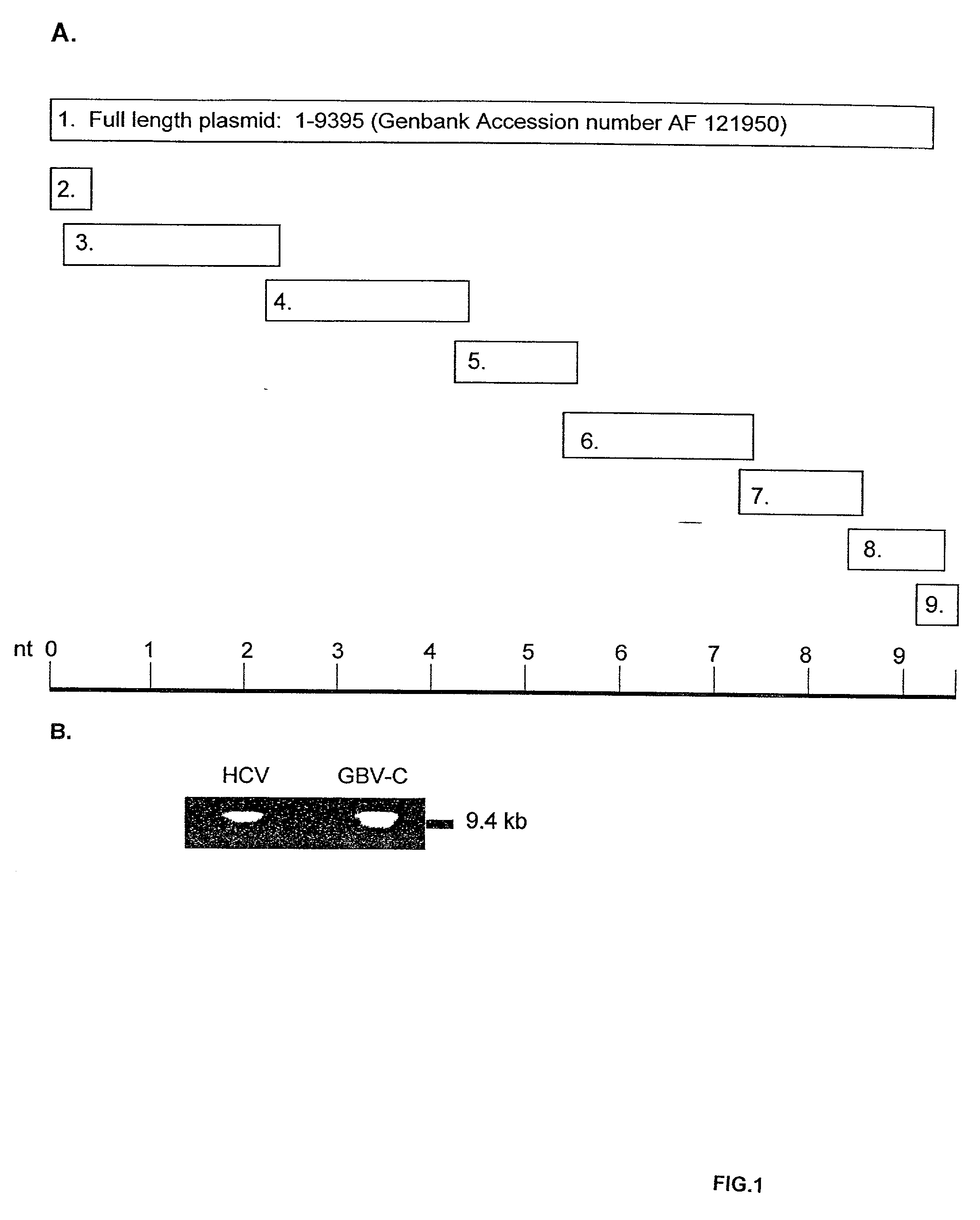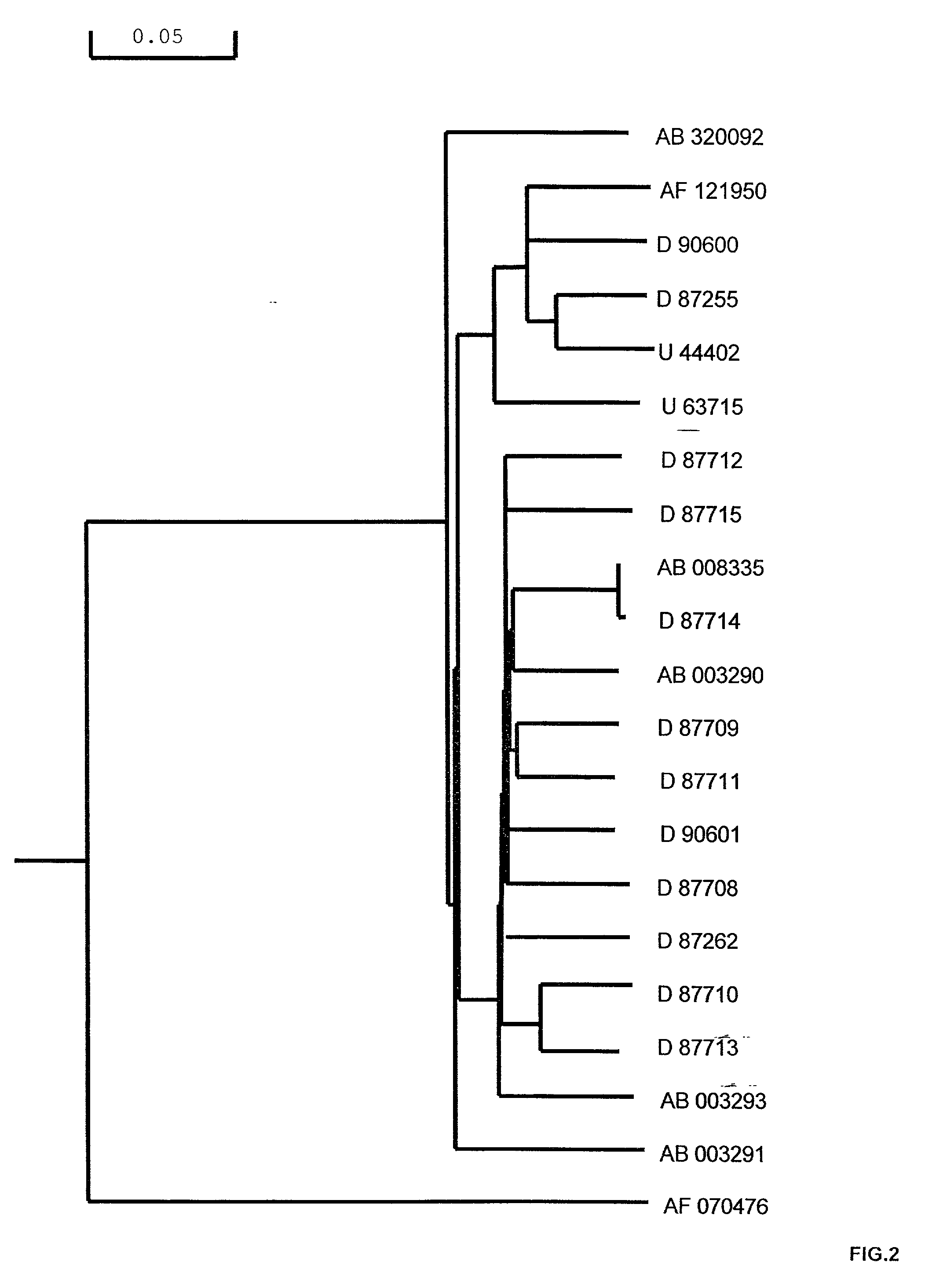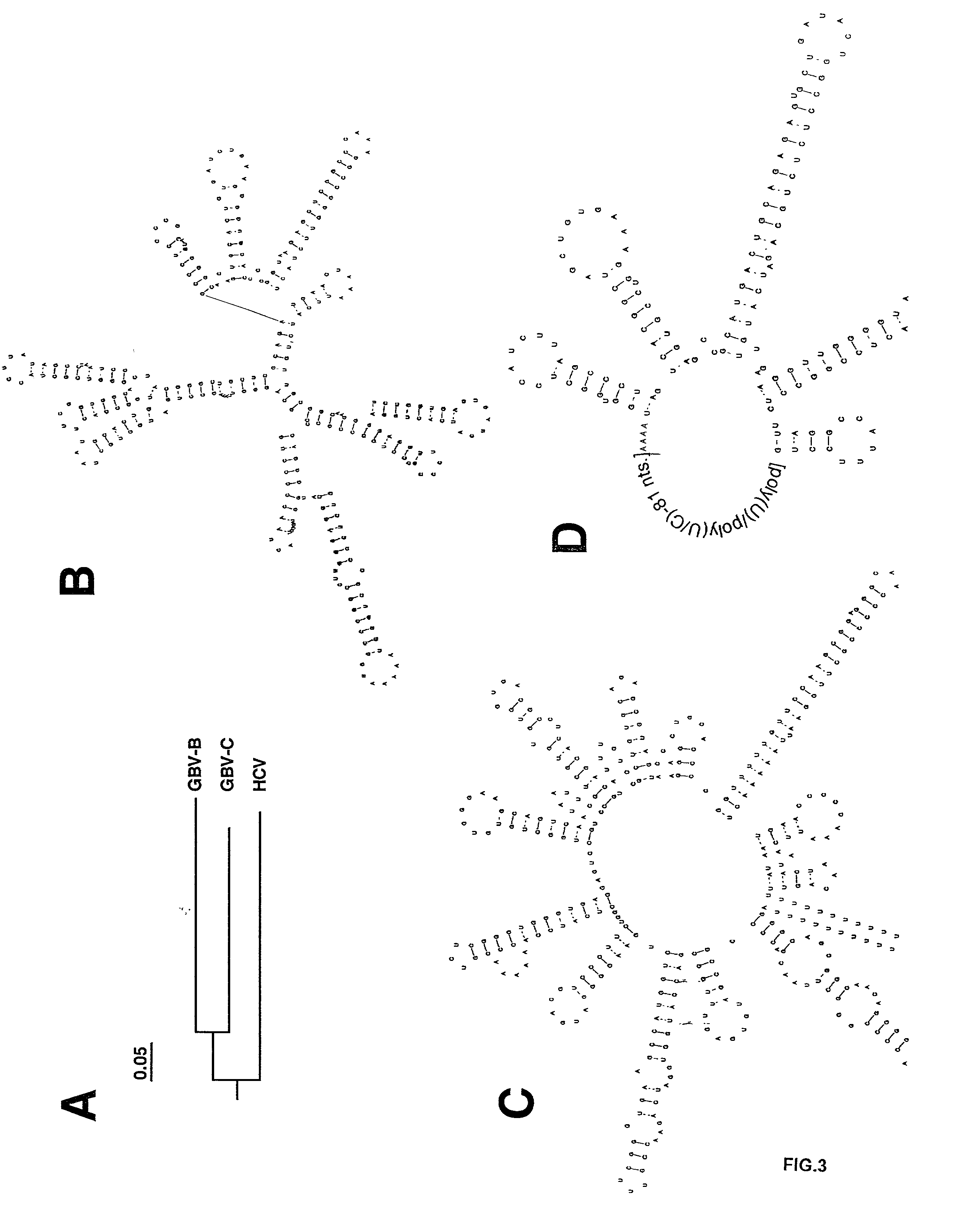Full-length GB virus C (hepatitis G virus) RNA transcripts are infectious in primary CD4 positive T cells and methods of treating HIV
a technology of hepatitis g virus and transcripts, applied in the field of molecular biology and virology, can solve the problems of unfavorable side effects, rare findings, and the death of most individuals infected with hiv
- Summary
- Abstract
- Description
- Claims
- Application Information
AI Technical Summary
Problems solved by technology
Method used
Image
Examples
example 1
[0315] Materials and Methods
[0316] Isolation and Preparation of Cells
[0317] Peripheral blood mononuclear cells (PBMCs) from healthy blood donors (HCV RNA and antibody negative, HGV RNA negative, and HBV surface antigen negative) were isolated from heparinized blood by centrifugation on Ficoll-Hypaque gradients, washed twice with phosphate-buffered saline (PBS), and suspended in RPMI 1640 medium (Sigma, St. Louis, Mo.) supplemented with 10% fetal calf serum (FCS) and antibiotics as previously described (Cook et al., 1997). PBMC (2.times.10.sup.6 cells / ml) were maintained at 36.degree. C. in 5% CO.sub.2. Phytohemagglutinin (PHA, 10 .mu.g / ml; DIFCO, Detroit, Mich.) and Escherichia coli lipopolysaccharide (LPS, 10.mu.g / ml; Sigma) were added to the medium for 48 hours, following which, 10.sup.7 cells / ml were maintained in RPMI supplemented with 5% of interleukin-2 (IL-2) (Cellular Products Inc., Buffalo, N.Y.) and 5 .mu.g / ml of PHA.
[0318] GBV-C RNA Preparation and RT-PCR
[0319] A previous...
example 2
[0336] Construction of GBV-C Clone
[0337] To construct full-length GBV-C cDNA, nested RT-PCR was performed on plasma RNA obtained from a GBV-C infected individual using a variety of oligonucleotide sets spanning the entire genome. Six primer sets were identified which generated overlapping products containing restriction sites useful for ligation (Table 4). These six fragments started at nucleotide 25 and ended at nucleotide 9340. To identify the 5' and 3' ends of the genome, the 5' and 3' RACE methods were used. Primers used for these reactions were located from nt 284 to nt 305 (antisense) for 5' RACE and 9085 to 9106 (positive sense) for the 3' RACE. Each of these eight PCR.TM. amplification products was cloned into the pCR 2.1 vector and the nucleotide sequence was determined (FIG. 1A, Genbank access # AF 121950). Following ligation of the 8 fragments shown in FIG. 1A, a clone containing the full length GBV-C sequence of the GBV-C isolate was obtained. All cloning sites were agai...
example 3
[0338] GBV-C Sequence Analysis and Comparison with GBV-B and HCV
[0339] The GBV-C sequence the inventors obtained (AF121950) contained an open reading frame (ORF) beginning at nucleotide (nt) 351 and extending to nt 9080. This ORF is predicted to encode a 2910 amino acid long polyprotein with a molecular weight of 314,548 daltons. The complete GBV-C sequence of this isolate was compared with 19 additional human isolates and one chimpanzee isolate obtained by searching Genbank for complete GBV-C sequences. Nucleotide sequences were aligned, and the evolutionary distance between sequences was determined using the Jukes-Canter method (DNAMAN software; Lynnon BioSoft Inc, Quebec, Canada). Computed distances were used to construct phylogenetic trees by using the neighbor joining method (DNAMAN). FIG. 2 demonstrates that except for the chimpanzee isolate (AF 070476, GBV-Ctro) (6), there were close phylogenetic relationships between the isolate and all published GBV-C isolates. Twelve of th...
PUM
| Property | Measurement | Unit |
|---|---|---|
| Digital information | aaaaa | aaaaa |
| Volume | aaaaa | aaaaa |
| Volume | aaaaa | aaaaa |
Abstract
Description
Claims
Application Information
 Login to View More
Login to View More - R&D
- Intellectual Property
- Life Sciences
- Materials
- Tech Scout
- Unparalleled Data Quality
- Higher Quality Content
- 60% Fewer Hallucinations
Browse by: Latest US Patents, China's latest patents, Technical Efficacy Thesaurus, Application Domain, Technology Topic, Popular Technical Reports.
© 2025 PatSnap. All rights reserved.Legal|Privacy policy|Modern Slavery Act Transparency Statement|Sitemap|About US| Contact US: help@patsnap.com



